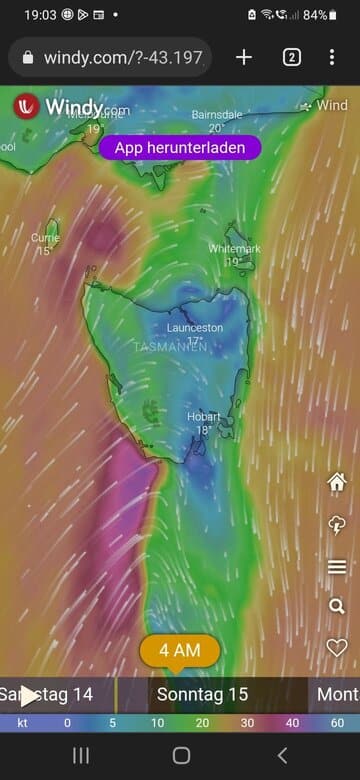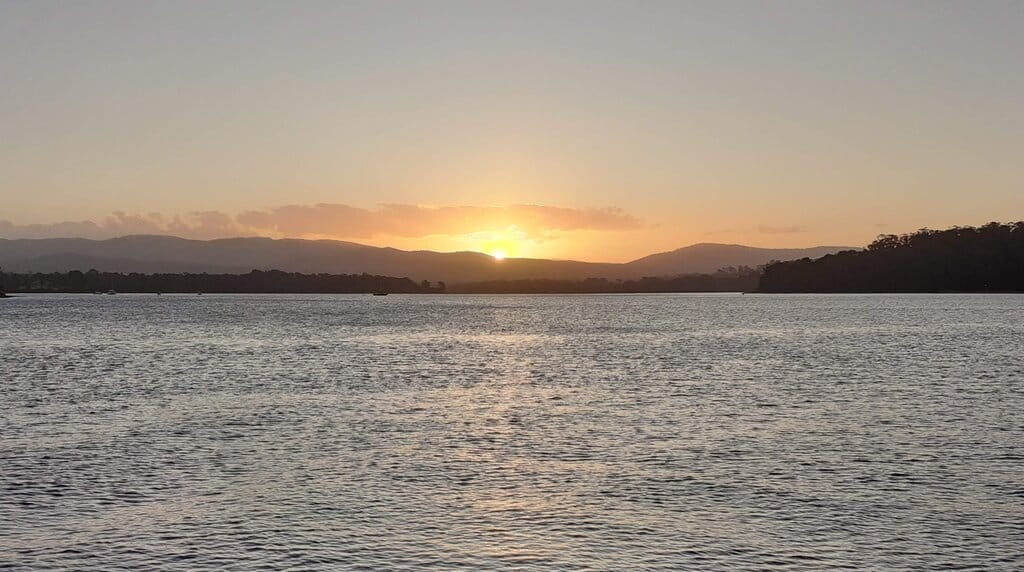Bass Strait has a well deserved reputation as one of the most treacherous bodies of water in the world. A combination of shallow seas, currents and weather systems has brought many a sea voyage to an untimely end.
Old Salt (https://oldsalt.net.au)
A typical quote about the Bass Strait, the area you need to cross to get from Mainland Australia to the island and state of Tasmania. But every one agrees that Tasmania is beautiful and the inhabitants are incredibly friendly so we had to cross the straits.
We left Jervis Bay and began by sailing 250 miles down the coast of Australia. Once we reached the “end of the continent” the weather forecast was showing very strong winds in the straits so we turned west and stayed near the coast. That worked well until we reached a huge oilfield which stretches south effectively blocking our path. We turned south and passed a few oil rigs which are huge, like science fiction monsters and can be seen far away. More worryingly, we turned straight in to the heavy weather and our instruments were showing huge buoys scattered around but which we could not see in the three meter waves. We survived and then crossed a traffic separation scheme which is a motorway for ships. Luckily it wasn’t too busy.

By now the wind was really strong and pushing us at seven knots towards the passes between Flinders and Deal Islands. The charts showed that we were going to be arriving when the current was at the strongest against us. “Wind over current” is something you really want to avoid so we took away all the sails except a few meters of foresail. We were still making four knots but that would allow the tide to turn. Neill went for a sleep and left Heidi to deal with the five cruise ships that passed during the night.

The plan had been to anchor at Flinders Island but, with the forecast now promising strong west winds, that became unsafe so we decided to continue on to the north coast of Tasmania. This added 80 miles and another day to the journey but we were promised three hours of north east wind which would help us “get in position”.

The three hours arrived but instead of wind we were becalmed and could go nowhere. When the wind came back it was a strong south west wind so we were as hard on the wind as we could set the boat. We made good time but it still took us eleven hours of jumping waves and diving through others to reach the mouth of the Tamar River. It was a wet and rough ride.
Only five miles before the river mouth the wind dropped so we put out all the sails and got a bowl of food. We had each taken two spoons full of noodles when the wind picked up again and turned 180 degrees. Within minutes we had high wind and waves from the north east. Bowls in the sink, stow the big genoa, set a third of the small jib sail, turn the boat back towards Tasmania and start a wild ride in to the river. Heidi was calling the course from the chart table and Neill was doing his best to steer the course she required. Luckily the wind bent round a headland and allowed us to sneak in to the river.
Still doing seven knots we continued up the river for five miles before anchoring in a tree protected bay up a sidearm of the river. Safely at anchor we could take a good look at our Artemis and see a foresail needs the attention of a sailmaker, and everything was encrusted in salt. But we had made it safely across the Bass Strait to Tasmania. Another story for when we are old.

Once again, a huge thank you to Davo for providing weather forecasts and advice during the crossing. We love having you “in the crew”.


wow. sounds exciting 😀. we’ll done ✔